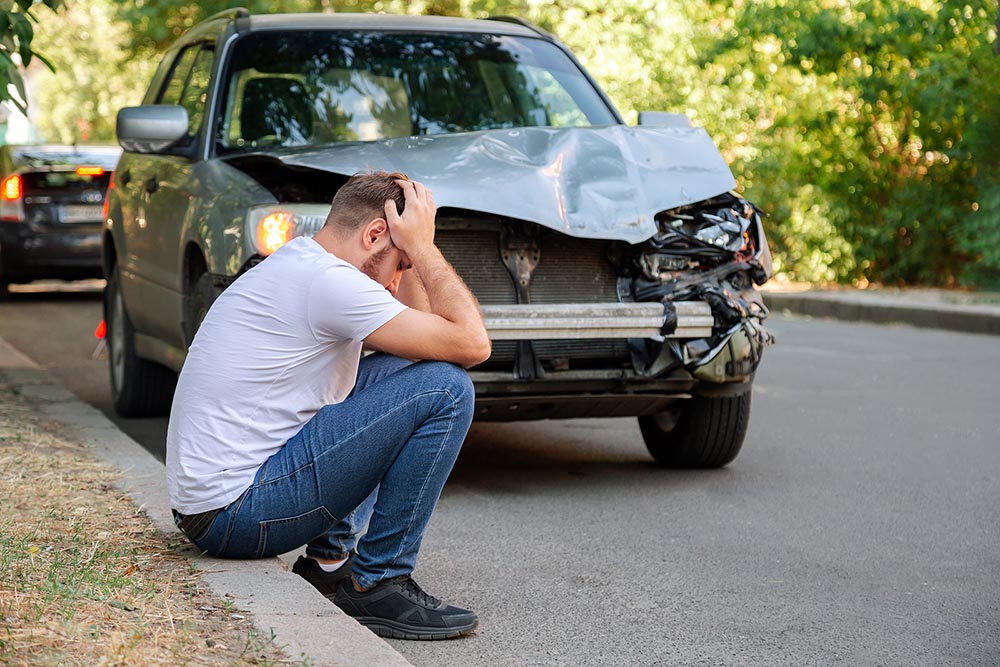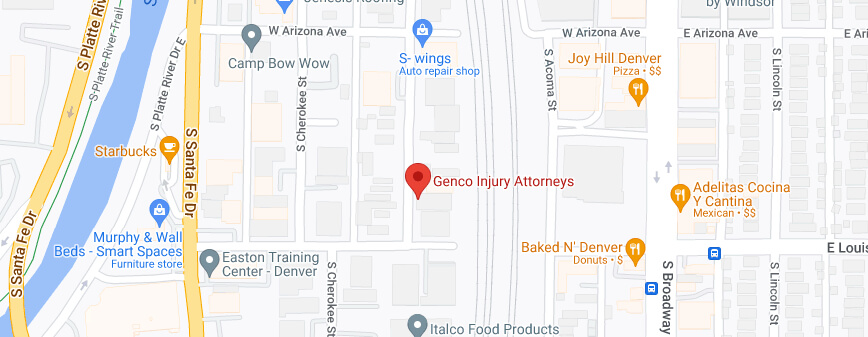A head-on collision is a particularly terrifying type of car accident to be in since it involves a vehicle approaching another vehicle in the same lane–something that shouldn’t happen. Unfortunately, these types of collisions happen all too often for many reasons. The liability is relatively straightforward in some cases but not as much in others. Here’s what you need to know.
How Is Liability Determined in a Head-on Collision?
The most obvious situation is when someone is going the wrong way on the road, whether going the wrong way on a one-way street or in the wrong lane of a multiple-lane road. This can happen by accident (someone didn’t see the one-way sign, for example), or there are other conditions that could be described as negligence (see below). It could even involve poor road conditions, such as extensive ice, that caused a driver traveling in the correct line to slip into the other lane. Of course, even not seeing a one-way sign isn’t a great excuse, as drivers should always be alert for signage that affects where and how they drive. The same applies to road conditions: Drivers should be more cautious when road conditions are bad.
What Is Negligence?
When a head-on collision is investigated, the investigators will look for any sign of negligence in one or both drivers. That includes anything from driving while under the influence (DUI) of drugs or alcohol, driving while fatigued, speeding, to distracted driving (using a phone while driving, eating, adjusting car settings, etc.).
Negligence is loosely defined as someone not taking a reasonable amount of care to protect themselves and others in their vicinity. Someone who disobeys traffic laws or sends text messages while driving (just two examples) is not making a reasonable effort to be safe.
What Is Modified Comparative Negligence?
It’s important to understand that even if one of the drivers was clearly going the wrong way, investigators would look at both drivers’ behavior and actions. That’s because Colorado is what’s known as a modified comparative negligence state. That means that both drivers can be assigned a percentage of the responsibility for the collision.
For example, one driver was looking at their phone and turned the wrong way down a one-way street. Clearly, they will likely have some liability. However, the driver going the right way was speeding and couldn’t react fast enough to prevent the accident. In that situation, both drivers could be held partly responsible. Hypothetically speaking, the driver going the wrong way could be assigned 80% of the blame and the speeding driver 20%. If the speeding driver was injured and awarded damages of $10,000, that total is reduced by 20% for their role in the accident.
However, it becomes even more complicated if both drivers (or more, if more than two drivers were involved) are assessed as nearly equal in fault. In some states, if someone is injured in an accident and found to be 99% at fault can still collect 1% of the damages. That’s called pure comparative negligence.
In Colorado, modified comparative negligence means that if the injured person is found to be less than 50% at fault, they can collect damages. But if they’re found to be 50% or greater at fault, they’re not allowed to collect any damages at all. Some states have a 51% threshold, but Colorado (along with several other states) sets the bar at 50%.
If it looks like all involved drivers potentially share equal or close-to-equal fault, each side will be motivated to shift as much blame as they can to the other. This is a situation in which it’s vital that you work with an experienced attorney who knows what tactics the other side may use, as well as what evidence may help your case.
What Should I Do if I Was in a Head-on Collision?
First, call the police so they can begin an investigation and file a report. If you’re physically able, get the names and contact information of the other parties involved in the accident, as well as any eyewitnesses. Take note of any buildings nearby, whether business or residential, that might have security cameras that could have recorded the collision.
Even if you feel perfectly fine, it’s essential that you see a doctor for a thorough examination. There are many injuries that can result from a car accident that don’t necessarily exhibit symptoms immediately. Some of those injuries can be severe or even life-threatening. However, another reason to have a checkup as soon as possible is that if injuries show up later, but you didn’t see a doctor right away, the other side could try to claim those injuries were unrelated to the collision.
Then call Genco Injury Attorneys at 303-500-1376 for a free case evaluation. Head-on collisions can be complicated cases to pursue. Having an experienced, knowledgeable personal injury lawyer representing you is highly recommended.
There’s also something important you should not do, and that’s to engage in communications with the other parties in the case. You may hear from their insurance representative or attorney, but don’t have a conversation or exchange emails or letters with them. They will likely try to get you to say something that could be interpreted as taking fault for the accident, or they’ll try to get you to accept a settlement that’s lower than what you might be entitled to. Refer all communications to your lawyer.












